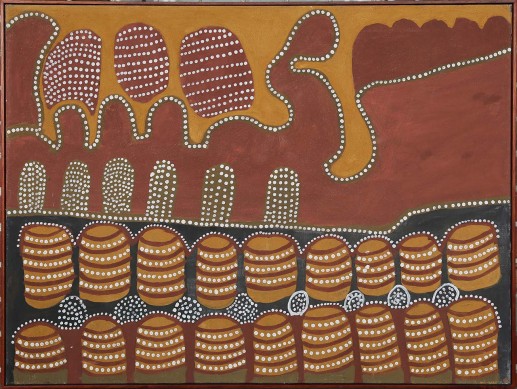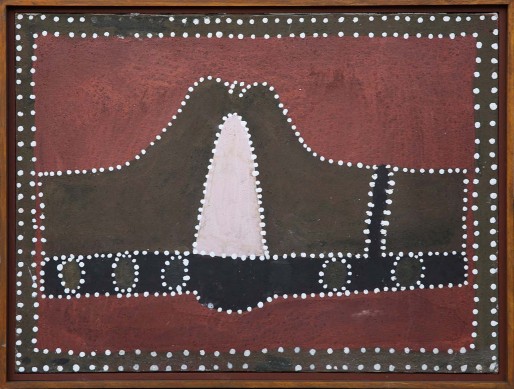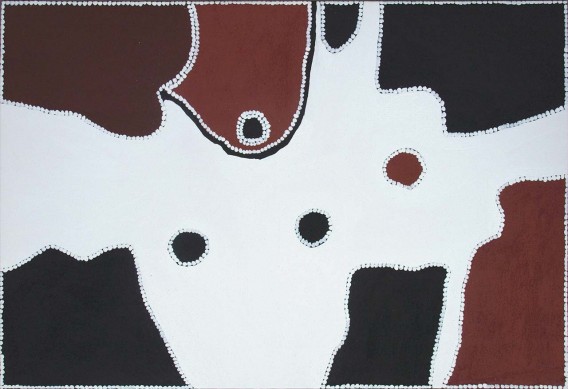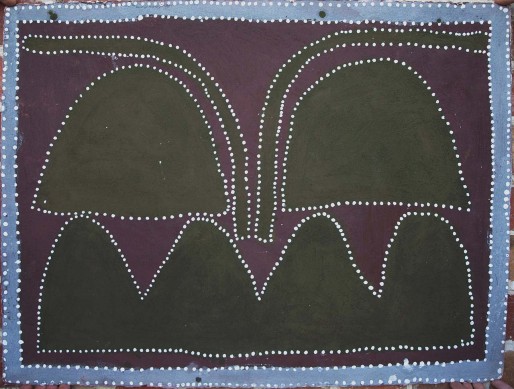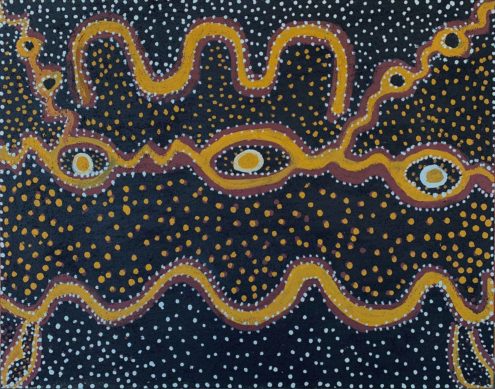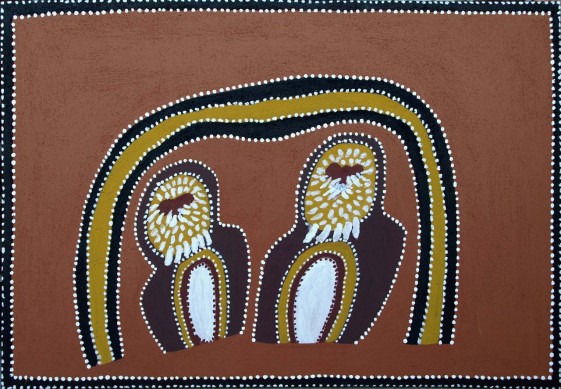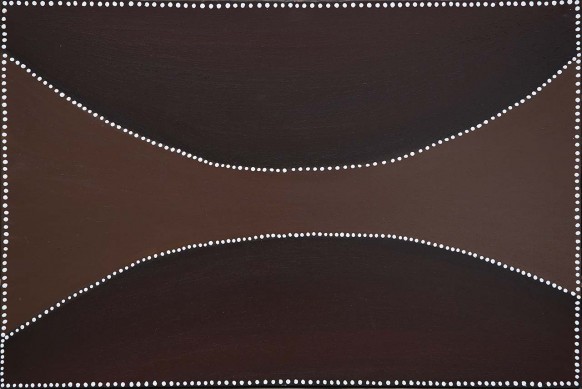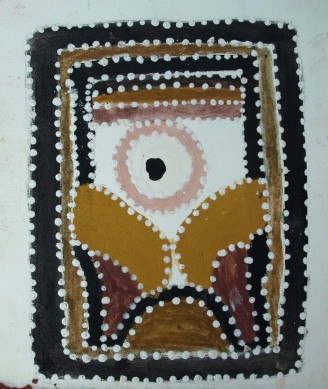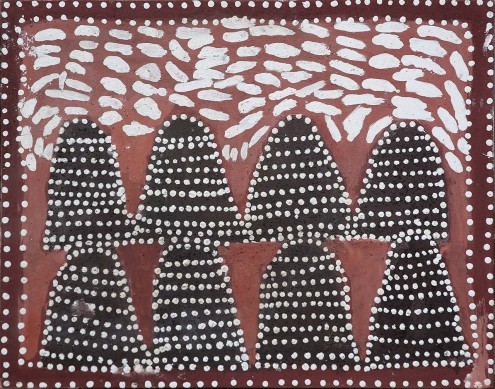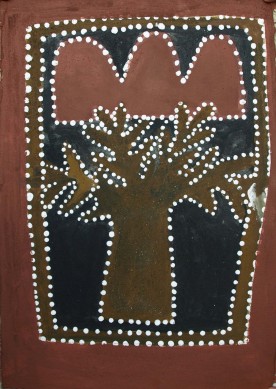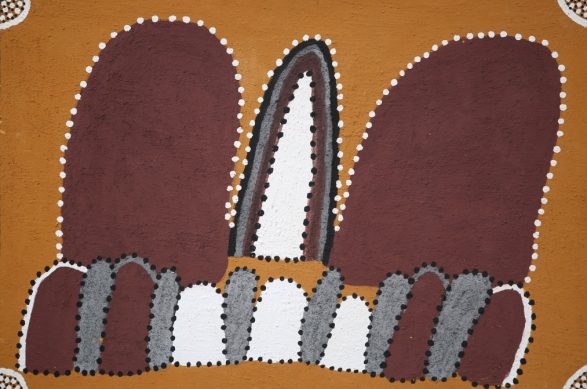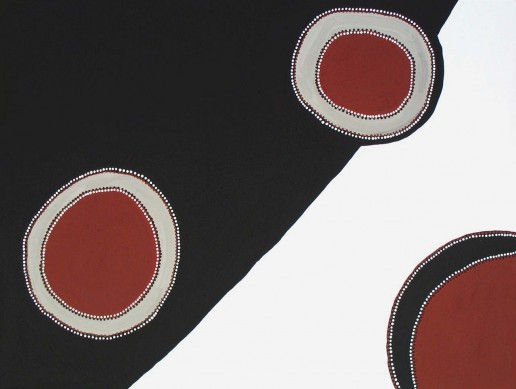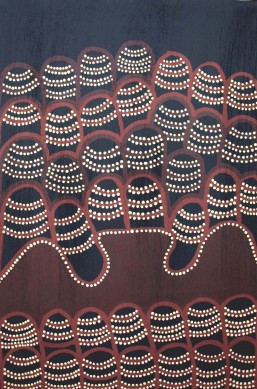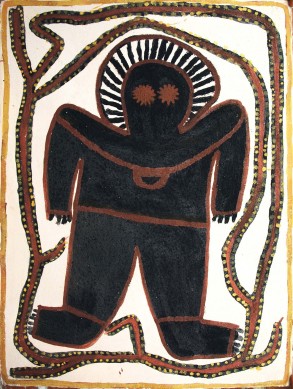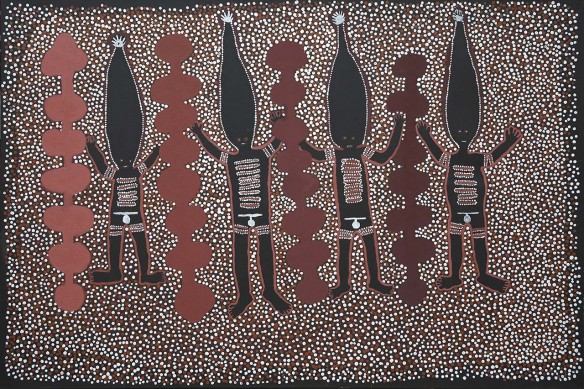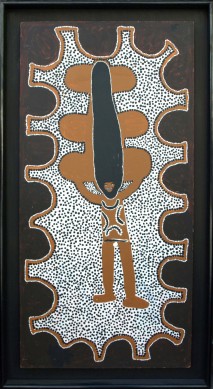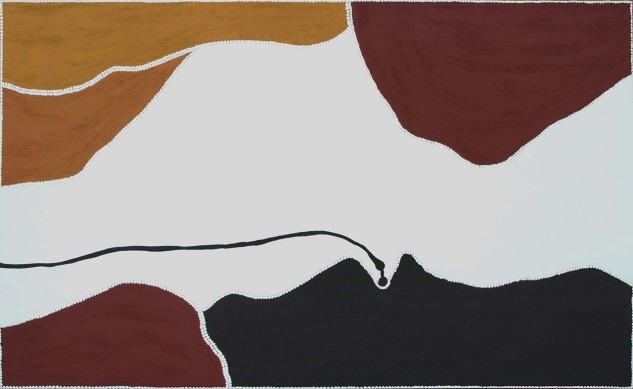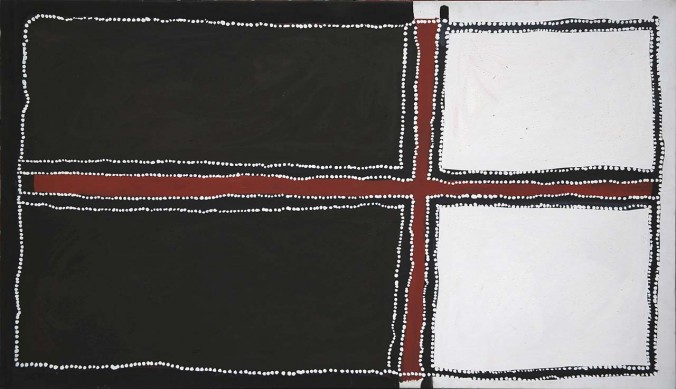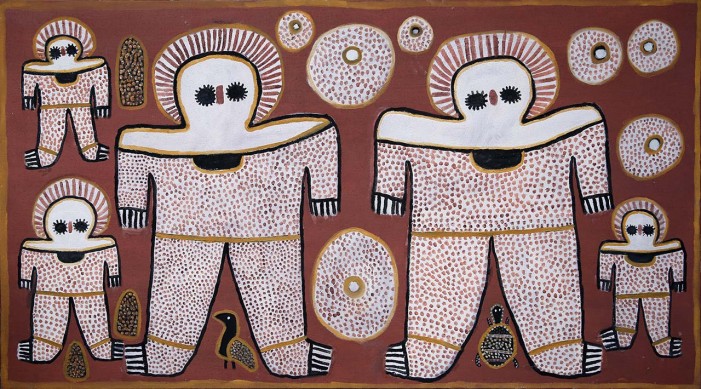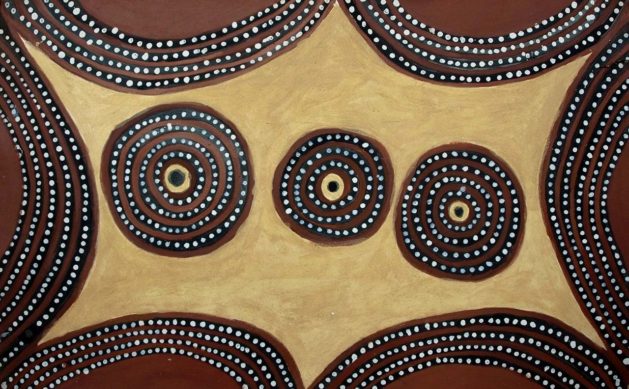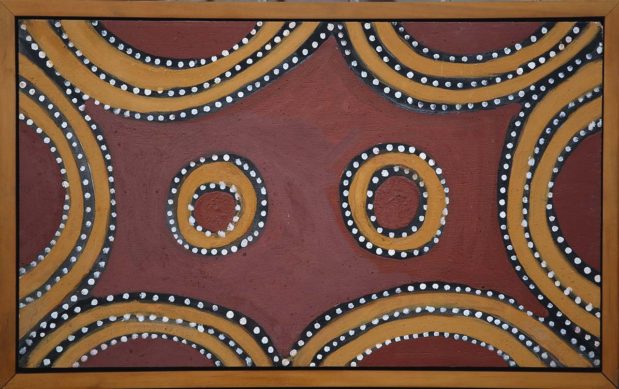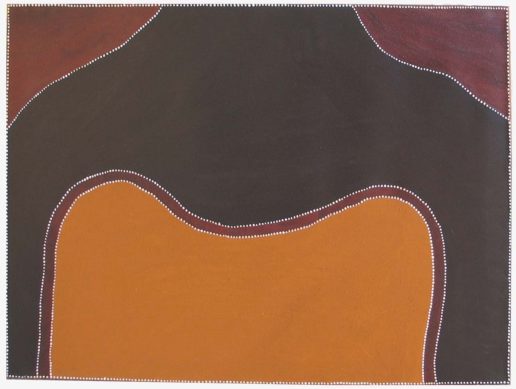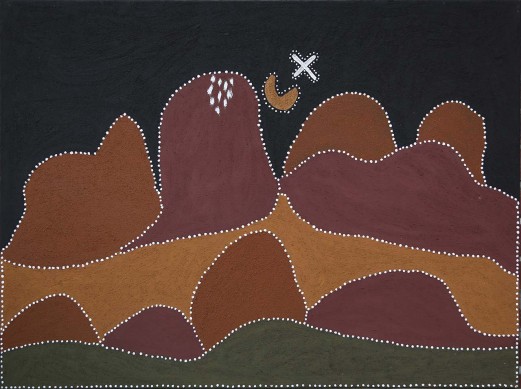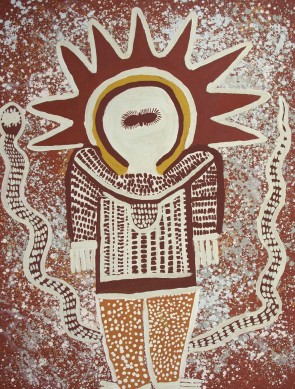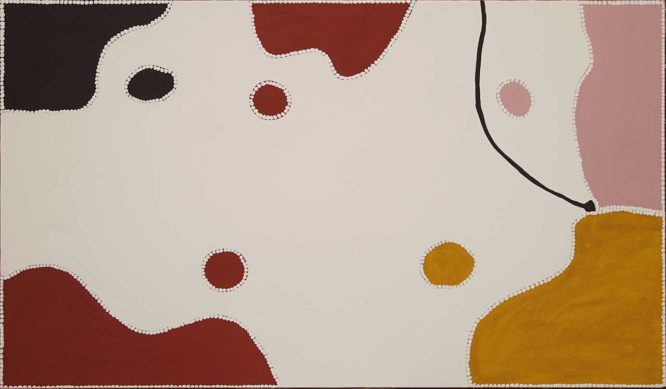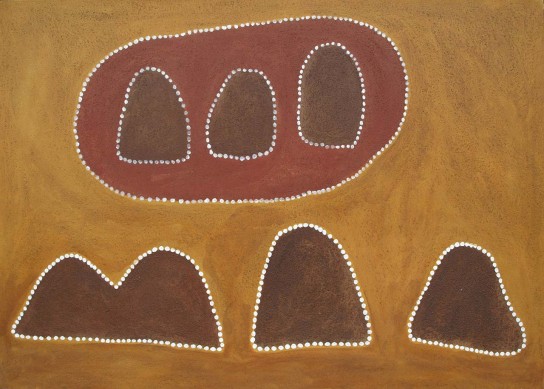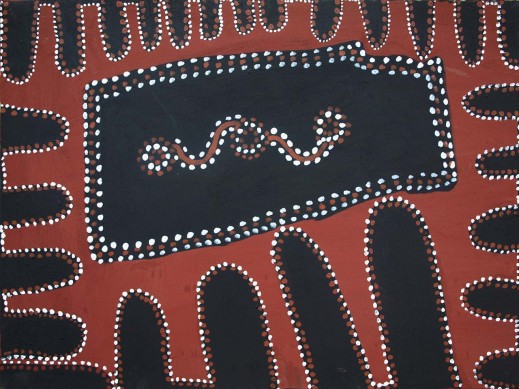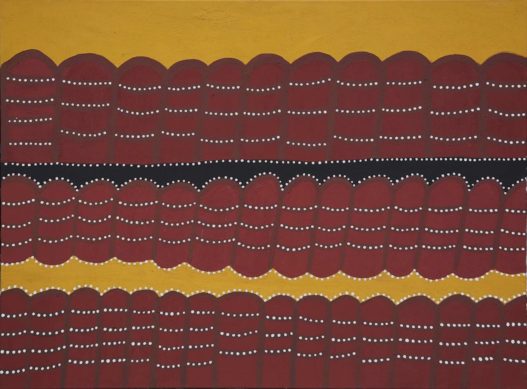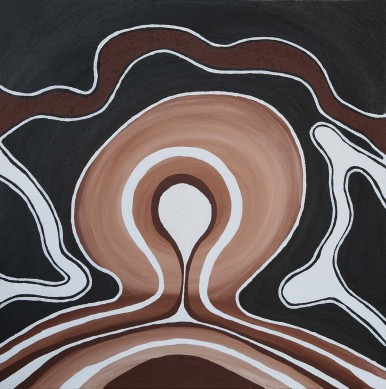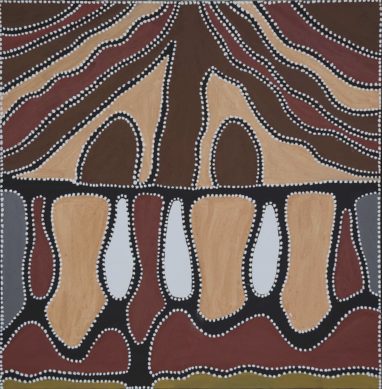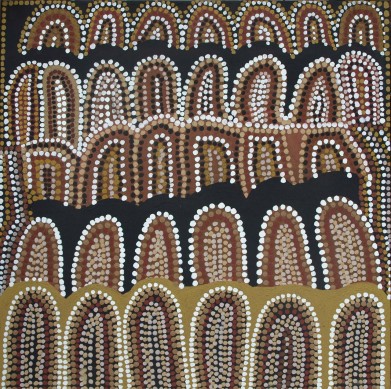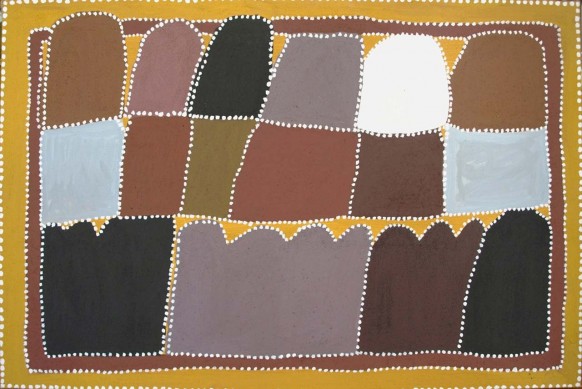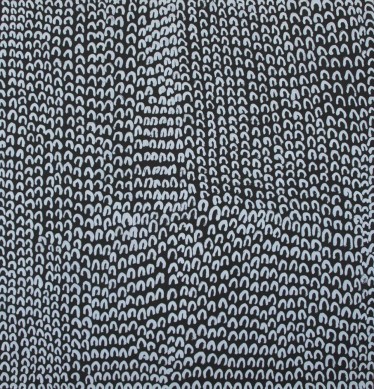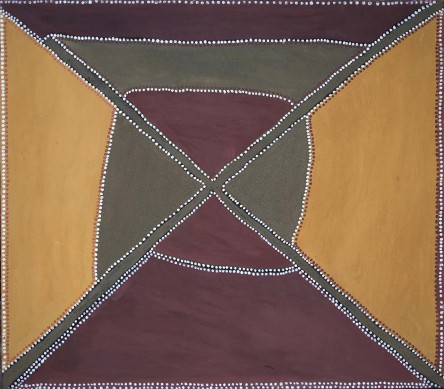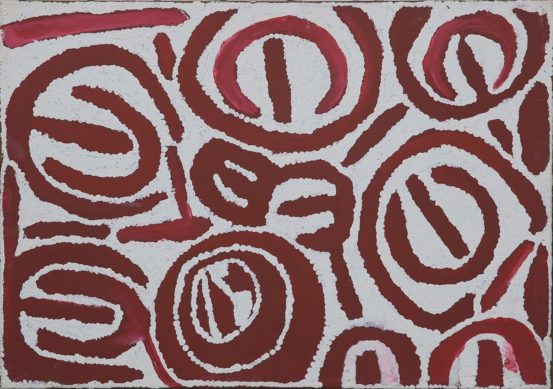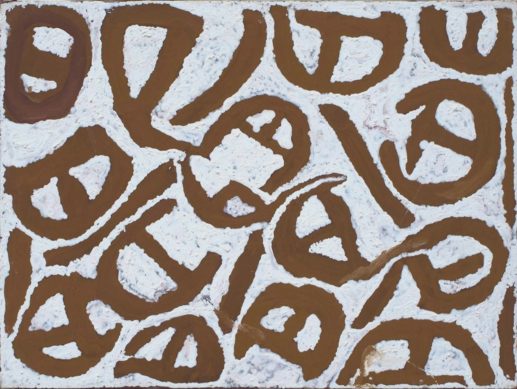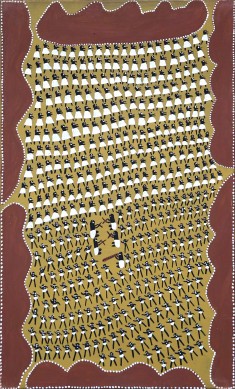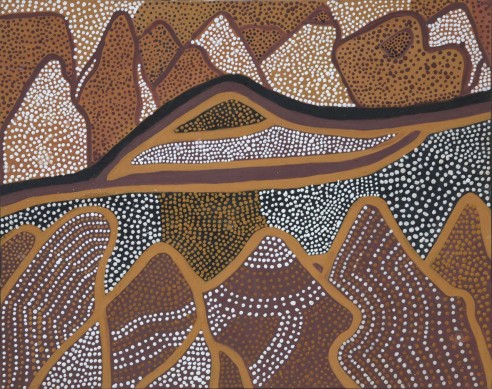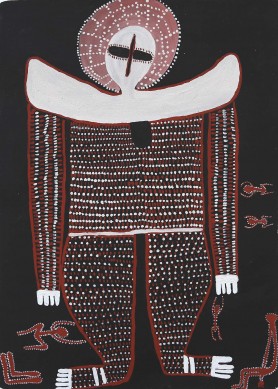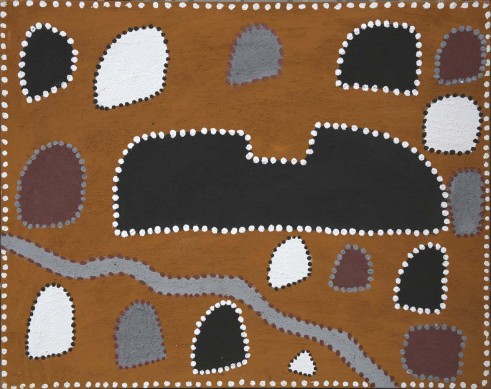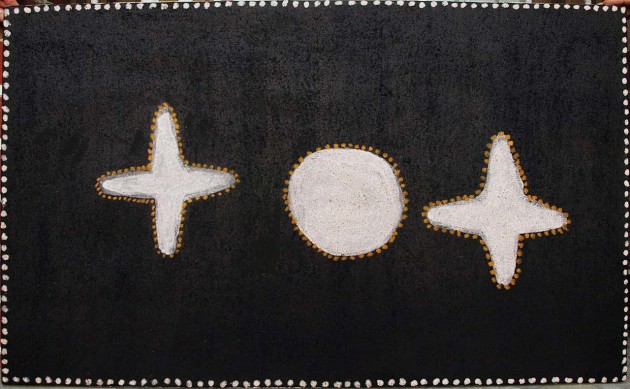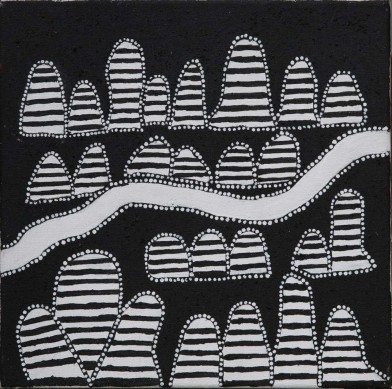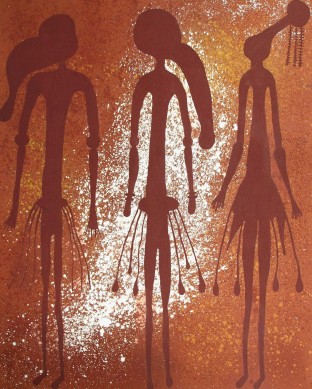Kimberley Ochre Artists
Gallery 1
30 May – 9 July 2014
Aboriginal art in the Kimberley region of north-west Western Australia maintains a strong regional character and unique approach to subject and image that sets it apart from all other art styles within the Aboriginal art world.
The deeply entrenched cultural practice behind the rock art found in sacred ceremonial places has fed into the contemporary art of the western and coastal groups of artists, including Wunumbul, Ngarinyin, Worrorra and Kwini clan groups. Senior lawmen of these countries were still refreshing ancient rock art sites up until current times. The transition into painting on canvas has carried many of the symbols and stories from the sacred rock art sites into contemporary art galleries. Major artists expressed the Wandjina, Ungudd and Gwion Gwion spirit stories onto canvas and represented in this exhibition are Lily Karadada, Mercy Fredericks, Regina Karadada and Jack Dale Mengenen.
Kalumburu artists had established their own style in interpreting the paintings of Wandjina spirit figures in the 1970s, and this has been carried through in the work of Lily Karadada, whose long career sees her still producing some artworks. The family has produced many artists and Regina Karadada continues this tradition with her rather solid images of Wandjinas and Gyorn Gyorn (Bradshaw figures). Mercy Fredericks is amongst a new generation of Kalumburu artists taking on the great ochre techniques from their community.
The great ochre painting tradition of the East Kimberley is centred on Warmun and Kununurra communities, and emerges from both rock art painting and from body painting and ceremonial dance boards used in ritual occasions. The contemporary East Kimberley tradition was stimulated by the ceremonial painters at Turkey Creek (Warmun), when in the 1970s Paddy Jaminji and Rover Thomas painted the Krill Krill dance boards, and artists such as Jock Mosquito and Freddie Timms learned the skills that carried through into the new century. Henry Wambini, Hector Jandanay and Jack Britten were senior figures in Warmun and Britten created his own hub of artists around Frog Hollow community. Mark Nodea and Tommy Carroll were recipients of these elders’ knowledge amongst the next younger generation. Queenie McKenzie established her own great narrative qualities and other women Gija artists joined her, including Goody Barrett, Shirlie Purdie, Phyllis Thomas, Nancy Nodea, and later Sade Carrington, Nora Nagarra and Jane Yalunga, the daughter of Rover Thomas.
These artists drew their subjects from traditional stories and Ngarrankarni Dreamings, as well as from historical events that had marked the relationships between Aboriginal people and white settlers all across the Kimberley. Many of the paintings drew attention to the hardships and the alternate history that is the largely untold story of Aboriginal existence in the Kimberley districts during the twentieth century.
The Kimberley soils are a rich source of the iron based ochre pigments that have been used by Aboriginal artists for millennia. Ancient rock paintings of the Gwion Gwion figures painted in red oxide have been dated back at least 18,000 years. Ochre paints continue to be used for rock painting and body decoration in ceremonies today.
Further information is available on exhibiting artists on the following links
Rover Thomas Paintings
David Downs Paintings
Jack Britten Paintings
Lily Karadada Paintings
Freddie Timms Paintings
Jack Dale Mengenen Paintings
Jock Mosquito Paintings
Regina Karadada Paintings
Mercy Fredericks Paintings

